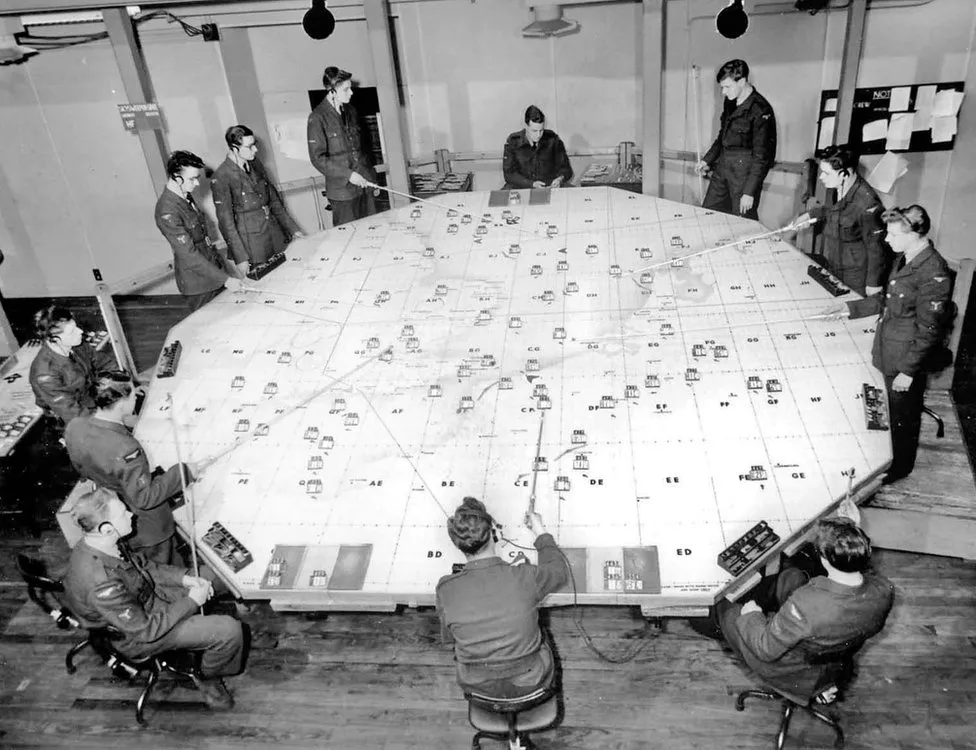Hidden history of Scotland's biggest nuclear bunker
Scotland's biggest Cold War bunker is buried deep beneath an Edinburgh hill - and its existence has remained unknown to most people for decades.

Barnton Quarry Nuclear Bunker was built in 1944 and expanded in 1951, but by 1955 it was defunct.
The secluded entrance to the building, which lies 100ft below Corstorphine Hill, can only be accessed down a rough private track.
Spread over three storeys, it was once Scotland's first line of defence against the threat of nuclear war.
It was equipped with a BBC broadcasting studio and would have housed Queen Elizabeth if the city had been attacked while she was in residence.
At its heart, surrounded by a maze of corridors and rooms, is the main operations floor, where information would have been gathered in the 1950s to locate any aircraft in Scottish air space.
But a former Home Office bunker official, who wanted to remain anonymous, told BBC Scotland that the radar operations centre only lasted 18 months.
"They spent all those millions on it, but technology in fighter jets then became more advanced than the radar systems in the bunker - so that was the end of that," he said.
The bunker, which is located on the same hill as Edinburgh Zoo, was declassified in 1955.
In 1960 it was taken over by the government and became a protected control centre in event of a nuclear attack.
But five years later this was moved to a bunker in the Kirknewton area of the city, before moving around several other locations.
The military closed the site and in 1983 transferred ownership to Lothian Regional Council for use as an emergency control centre.
However, the council later said the bunker was too big and was never really used.
MacGregor Properties bought it but failed to get planning permission to build retirement flats on the site.
Then in 1996, local businessman James Mitchell bought the bunker for £60,000.
He said: "They couldn't do anything with it because they weren't given planning permission for flats so I asked if I could buy it.
"They said they were in a board meeting and would call me back.
"I was in my car, and by the time I was driving over the Forth Road Bridge I had bought it."
However, when he was able to look inside he discovered "a terrible mess".
"Vandals had got in through the air vents and stolen a lot," he said.
"So I left it for a few years until I worked out what to do with it."
In the following years there were a number of fires, including one in 1998 which raged for two days and burnt out the whole of the bunker.
The former Home Office official said this had been carried out by an anarchist group called Edinburgh Bomby Group.
Its members had been convinced the government would use the bunker again in the event of a nuclear war.
"So they wrote their intentions on the doors of the bunker. They said they would chop down the telegraph poles, which they did, and number 10 on the list was to set fire to it.
"They used angle grinders and sledgehammers and set a motorcycle against the telephone exchange inside and set it on fire."
He estimated it would cost £20m to bring the bunker back to life.
The bunker's owner, Mr Mitchell, said he had spent £1m clearing more than 40 tonnes of debris, with help from volunteers.
Peter Gordon, the director of the Barnton Bunker Preservation Society, said very few people had been inside the bunker.
"When we first came down here there were dead rats everywhere and it smelled damp," he said.
"The fire had been an inferno that even caused the concrete to crack and pop, and you can still very much see evidence of this now."
Mr Mitchell, who also owns Scotland's Secret Bunker in Fife, said he wanted to bring the Category A Listed building back to life as a museum.
He has now secured charity status for the bunker and would like to offer "hard hat tours" to give people the chance to see it before it becomes a museum.
The Home Office advisor added: "I remember it in the days when your face reflected in the polished floors, but now it's a semi derelict building.
"It is unique and very interesting and exciting to visit.
"Although the bunker ceased to be secret in 1955, nobody talked about it."
-bbc







